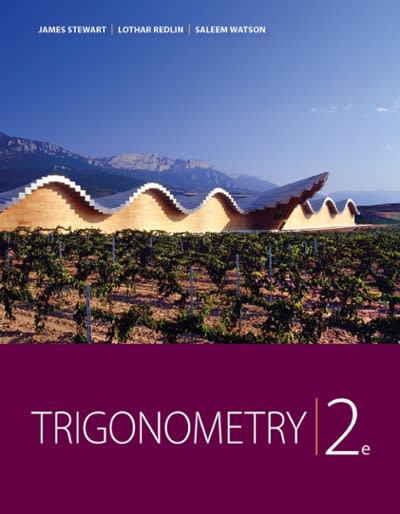Question
24. Without external cues such as the sun, people attempting to walk in a straight line tend to walk in circles (the accompanying image shows
24. Without external cues such as the sun, people attempting to walk in a
straight line tend to walk in circles (the accompanying image shows he paths
of two participants, PS and KS, attempting to walk in a straight line in an
unfamiliar forest on a cloudy day). One idea is that most individuals have a
tendency to turn in one direction because internal physiological asymmetries,
or because of differences between legs in length or strength. Souman et al.
tested for a directional tendency by blindfolding 15 participants in a large
field and asking them to walk in a straight line. The numbers below are the
median change in direction (turning angle) of each of the 15 participants
measured in degrees per second. A negative angle refers to a left turn, whereas
a positive number indicates a right turn.
-5.19, -1.20, -0.50, -0.33, -0.15, -0.15, -0.15, -0.07, 0.02, 0.02, 0.28, 0.37, 0.45, 1.76,
2.80.
a. Draw a graph showing the frequency distribution of the data. Is a trend in
the mean angle suggested?
b. Do people tend to turn in one direction (e.g. left) more on average than the
other direction (e.g right)? Test whether the mean angle differs from zero.
c. Based on your results in part (b), is the following statement justified?
People do not have a tendency to turn more in one direction, on average,
than the other direction. Explain.
Two different researchers measured the weight of two separate samples of ruby-throated hummingbirds from the same population. Each calculated a 95% confidence interval for the mean weight of these birds.Researcher 1 found the 95% confidence interval to be 3.12g < <3.48g,while Researcher 2 found the 95 % confidence interval to be 3.05g < < 3.62g.
a)How could the two researchers get different answers? b)Which researcher most likely had the larger sample? c)Can you be certain about your answer in part (b)?Why or Why not?
18.!In!Europe!53%!of!flowers!of!the!rewardless!orchid,!Dactylorhiza,sambucina,!are!yellow,! whereas!the!remaining!flowers!are!purple!(Gigord!et!al.!2001).!For!the!following,!you!may!use! the!normal!approximation!only!if!it!is!appropriate!to!do!so.!
a.If we!took!a!random!sample!of!a!single!individual!from!this!population,!what!is!the!probability!
that!it!would!be!purple?!
b.!If!we!took!a!random!sample!of!5!individuals,!what!is!the!probability!that!at!least!3!are!
yellow?!
c.!If!we!took!many!samples!of!n!=!5!individuals,!what!is!the!expected!standard!deviation!of!the!
sampling!distribution!for!the!proportion!of!yellow!flowers?!
d.!If!we!took!a!random!sample!of!263!individuals,!what!is!the!probability!that!no!more!than!150!
are!yellow?!
Step by Step Solution
There are 3 Steps involved in it
Step: 1

Get Instant Access to Expert-Tailored Solutions
See step-by-step solutions with expert insights and AI powered tools for academic success
Step: 2

Step: 3

Ace Your Homework with AI
Get the answers you need in no time with our AI-driven, step-by-step assistance
Get Started


